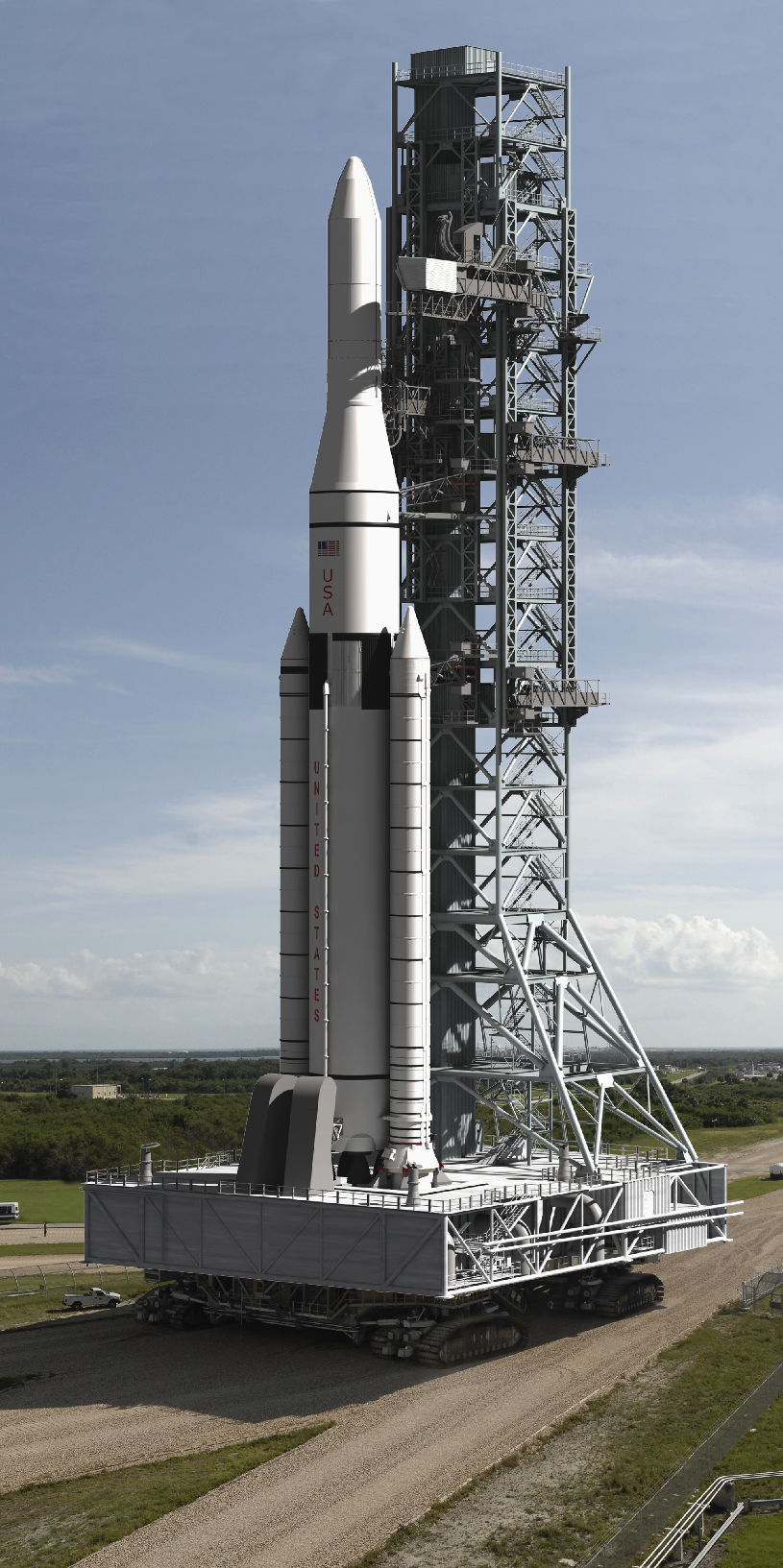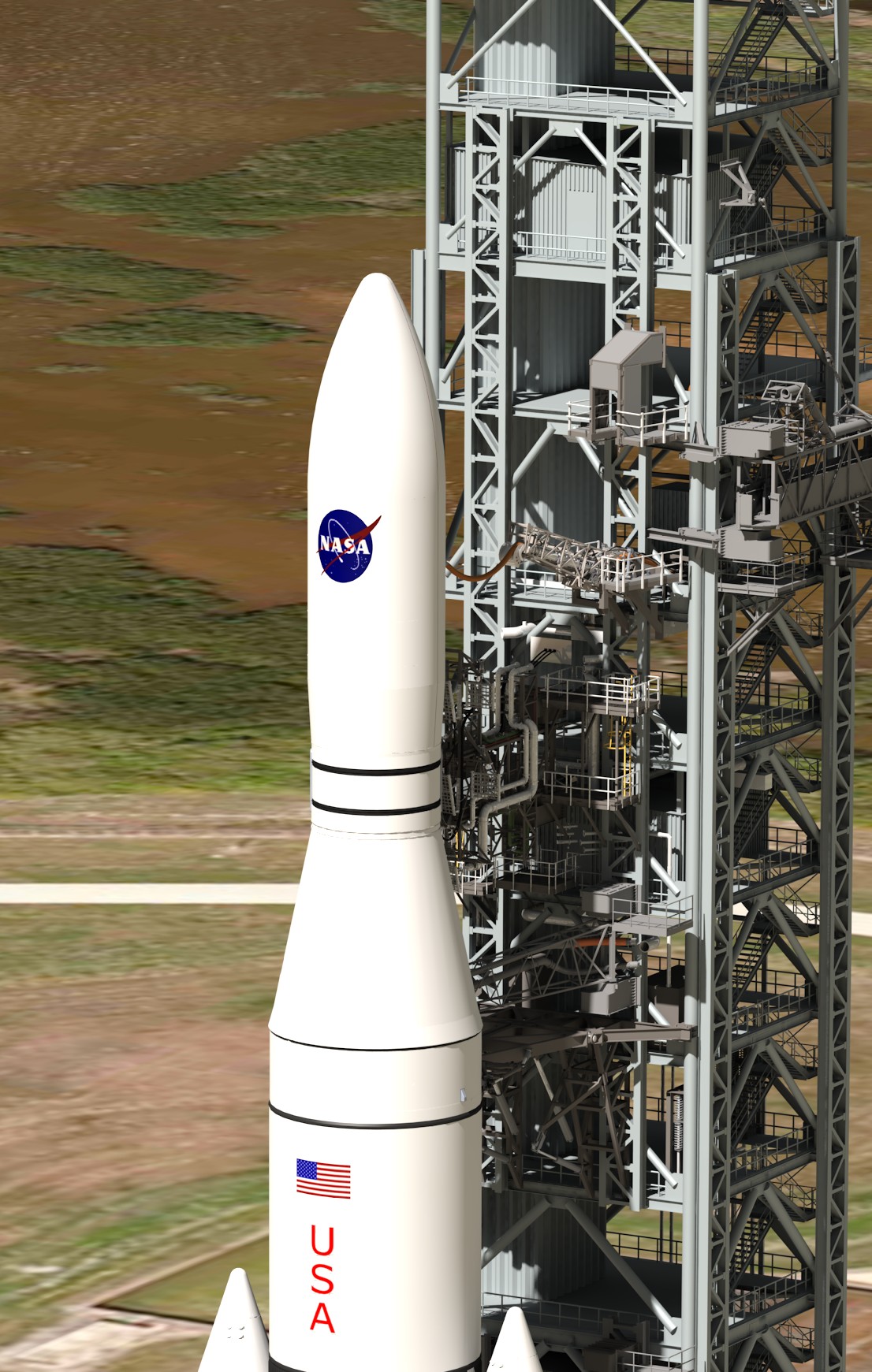When it comes to scientific probes exploring the far reaches of our solar system, the rules could be changing.
The human spaceflight community joined the space science community Jan. 13-14 at the Outer Planets Assessment Group (OPAG) meeting in Tucson, Ariz. There, scientists heard from the Space Launch System (SLS) Program about the capabilities and progress being made on the rocket, and discussed the potential benefits it also could bring to robotic exploration of the outer solar system.
“The potential use of SLS for science will further enhance the synergy between scientific exploration and human exploration,” said John Grunsfeld, astronaut and associate administrator for science at NASA Headquarters in Washington. “SLS has the promise of enabling transformational science in our exploration of the solar system and cosmos.”
Currently under construction, NASA’s Space Launch System will be the world’s most powerful launch vehicle. Designed to enable human exploration missions to deep space destinations, including an asteroid and Mars, SLS is working toward a first launch in 2017. For that first flight test, the rocket will be able to launch 70 metric tons (77 tons) of payload into low-Earth orbit, almost three times what the space shuttle could carry. From there, SLS will be evolved to a configuration that will be able to carry 130 metric tons (143 tons), more weight than any rocket ever has been able to carry.
“While many people think of the Space Launch System in terms of human exploration, SLS could have a wide application in a lot of other areas, including space science,” said Steve Creech, assistant program manager for strategy and partnerships for SLS. “For missions to the outer planets, for example, SLS could make it possible to do things that are currently impossible, such as sending larger scientific spacecraft with more instruments to far off destinations with reduced transit times.”
Agency scientific and engineering teams have been evaluating whether there would be potential benefits from launching deep space robotic spacecraft, such as the Europa Clipper, a proposed mission to one of Jupiter’s icy moons, on the SLS rocket, and determined the rocket would enable the spacecraft to fly direct trajectories to our solar system’s outer planets, rather than using planetary gravities to gain speed, reducing transit time compared to current launch vehicles. In the case of the Europa Clipper, for example, the transit time would be reduced to less than half of what it would be using other launch vehicles.
“For as long as people have been launching rockets into space, mission designers have had to work within certain limitations – a spacecraft can only be so heavy and it has to fit within a certain width,” Creech said. “Depending on how large you make it, it can only go so fast, which in some cases limits where you can go. Today, if you want to send a mission to the outer planets, you have to be able to make it fit within that box. With SLS, we’re about to make that box much larger.
“With the space shuttle, for example, we were able to launch missions like NASA’s Hubble Space Telescope that were about the size of a school bus. With SLS, you can design a spacecraft even larger than the space shuttle that carried Hubble. It’s going to open up an entirely new way of thinking about how we plan and design planetary science missions.”
NASA’s OPAG works to identify scientific priorities and pathways for exploration in the outer solar system past the asteroid belt, including the planets Jupiter, Saturn, Uranus, Neptune and their moons, and other destinations like comets and the distant Kuiper Belt Objects, including Pluto. The group actively solicits input from the scientific community and reports its findings to NASA Headquarters in Washington. OPAG provides input to NASA, is open to all interested scientists and regularly evaluates outer solar system exploration goals, objectives, investigations and required measurements on the basis of the widest possible community outreach. Current, NASA outer planets missions include the Cassini orbiter at Saturn and the New Horizons probe en route to Pluto.
The Advanced Concepts Office (ACO), at NASA’s Marshall Space Flight Center in Huntsville, Ala., where the SLS program also is managed, has been working to identify potential uses for the rocket that take advantage of its unique capabilities.
“The Space Launch System could be really game-changing for space science,” said ACO manager Reggie Alexander. “For some missions, it makes it much easier and quicker to carry them out. A Mars sample return mission, for example, could be flown using only one rocket instead of three. But for other destinations, SLS lets you do things we could only dream of before – like collecting samples from the geysers of Saturn’s moon Enceladus.”
Collaborative discussions such as the one at OPAG are part of NASA’s increased efforts to create synergies between its diverse programs.
“SLS is one piece in a much larger picture,” Creech said. “Human exploration missions will be drawing on the knowledge gained from programs like the International Space Station and the Curiosity rover on Mars, and, in turn, SLS could make it possible for other programs to do things they couldn’t do otherwise.”
NASA’s Space Launch System will provide an entirely new capability for human exploration beyond Earth orbit using NASA’s Orion spacecraft. Designed to be flexible for crew or cargo missions, the SLS will be safe, affordable and sustainable to continue America’s journey of discovery from the unique vantage point of space.
By David Hitt
Marshall Space Flight Center, Huntsville, Ala.
Media Contact:
Kim Henry
Marshall Space Flight Center, Huntsville, Ala.
256-544-0034
kimberly.m.henry@nasa.gov



























